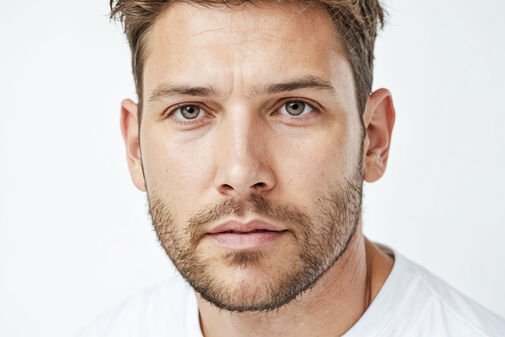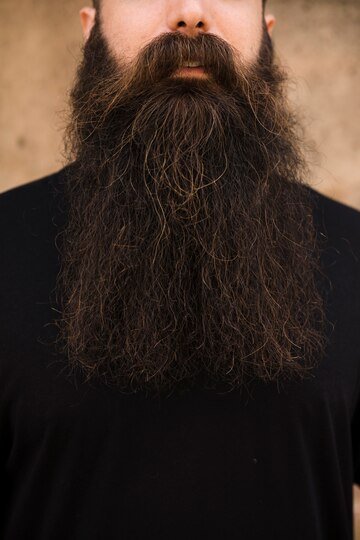Beard growing is a popular and exciting journey for men now. A bearded man looks attractive to others. Nevertheless, the process of developing a beard can present several challenges. Among those challenges, “Beardruff,” or beard dandruff, is a frequent one that many men encounter. It nearly seems like scalp dandruff. It can also be a frustrating problem that may cause itchy skin and flakes falling onto your clothes. Beardruff is mostly identifiable when a man often wears dark colors, which makes it seem like he has been caught in a snowstorm.
It is true that if you don’t have a beard, then you have no trouble with beard dandruff. But that cannot be the solution. You don’t have to shave off your beard for that. Instead, you can manage beard dandruff by simply making a few changes in your beard care or grooming routine. Regular maintenance like washing and moisturizing with the right beard products can play a good role in solving this problem. The journey to remove or solve this beard dandruff problem might take some effort, but trust me, the results will be worth it.
Whether you are new to the beard-growing journey or have been sporting a beard for a while, it is essential to understand how to prevent and treat beard dandruff. In this blog post, I will share some tips and tricks that will help you keep your beard looking its best and feeling comfortable. So please read on to tackle beard dandruff and enjoy the process of maintaining a healthy and well-groomed beard.
Topics Covered
Toggle
What Exactly is Beard Dandruff?
Beard dandruff is characterized by white, flaky skin that appears in the beard. It is quite similar to dandruff on your scalp. It also involves small flakes of dead skin that you will notice in your facial hair or beard, making your beard look unclean and less well-groomed. These flakes are clearly noticeable, which can make you uncomfortable with others, especially when they fall onto your clothes and are visible.
Whether you have a short stubble or a full beard, you may face this problem. It can affect both those who are new to growing a beard and those who have had a beard for a while. It is obviously frustrating but manageable by following a proper grooming routine and using the right products.
Recognizing Beard Dandruff
Knowing whether you have beard dandruff or not is very straightforward. It’s easy to recognize, especially if you have experienced dandruff on your scalp before. Here are a few signs that make it simple to locate or identify beard dandruff.
Flakes of Skin
You can check your clothes for a few days, especially on the chest and shoulder area of your clothes or shirts. If you notice any white flakes, then they can be dandruff. To determine whether they are from your beard or scalp, you can brush your beard while wearing a black or dark cloth. You probably have dandruff from your beard if you discover flakes on your clothing.
Itchy Beard
Men often have itchy beards, which can have a variety of causes. Generally, if you are a beginner in growing a beard, this is very normal. But it is not normal if the itchiness continues after a few months. Should it occur, it may indicate dandruff in the beard. Dry skin under your beard may be the source of the itching, which could result in flakes.
Sore & Sensitive Skin
Sore, red, and sensitive skin can be a cause of beard dandruff. This can be uncomfortable and might lead to small cuts or even bleeding if you scratch too much. So if your skin feels sore or looks red and sensitive, then you can identify that you have beard dandruff.
Why Beard Dandruff Occurs
Beard dandruff can be caused by several reasons. Sometimes you yourself are at fault, and sometimes external factors are to blame. Whatever the reasons are, you must know about them because understanding these will help you manage and prevent beard dandruff. Here are the reasons briefly explained:
Dry Skin
You might observe dry skin behind your beard in the winter or in arid, dry climates. If your skin under your beard is very dry, it will start peeling and flaking. Dry skin will also make your beard look and feel dry. Natural oils produced by your skin are essential for the health of your beard. So if you do not keep your beard moisturized and oily, then beard dandruff can affect your beard.
Oily Skin and Fungal Infections
In the above point, I mentioned that you should keep your skin oily. But keep in mind that dandruff from a beard can also result from excessively oily skin. If your skin is too oily, a common fungus named Malassezia globosa can thrive in your facial area. This fungus breaks down sebum (the oil produced by your skin) into oleic acid, which can irritate the skin and lead to flaking. If you don’t wash your beard frequently, an abundance of oil in it could lead to dandruff.
Contact Dermatitis
When your skin responds to certain substances, it might result in contact dermatitis, which can cause dry, cracked skin as well as a red, itchy rash. This can be triggered by ingredients in soaps, cosmetics, or fragrances. Identifying and avoiding these irritants can resolve beard dandruff caused by contact dermatitis.
Seborrheic Dermatitis
A persistent type of eczema that causes significant flaking and itching is called seborrheic dermatitis. An overgrowth of yeast on the skin, specifically Malassezia, can also be the reason for this. It’s a delicate, critical, and challenging condition to handle. Medicated creams or lotions prescribed by a doctor may be required.
Environmental Factors
Dandruff on the beard can frequently be seriously caused by extreme weather conditions. High winds and freezing temperatures can dry out the skin under your beard. In such conditions, if you do not use a scarf or other protective gear to shield yourself from the harsh elements, it may cause beard dandruff.
Stress and Hormonal Imbalances
Stress and hormonal imbalances are causes of many problems, and beard dandruff is no exception. Dandruff on the beard can result from an excess of sebum produced as a result of stress. So if you are unable to manage stress through a healthy lifestyle, it may result in beard dandruff.
Improper Beard Care
If you are using harsh shampoos or not rinsing them out properly, they can dry out the skin under your beard and lead to beard dandruff. Additionally, washing your beard with very hot water can irritate your skin and cause flaking. So if you are not aware of these, beard dandruff can affect you.
A Step-by-Step Guide to Reducing Beard Dandruff
You don’t need to be overly concerned if you have beard dandruff, but you should be aware of it. Just as you can take action to reduce or prevent dandruff on your scalp, you can do the same for your facial hair. Beard dandruff can be managed and prevented by following a few guidelines or steps. Here are those steps:
Step 1: Wash Your Beard
This is the first and foremost step, crucial for managing or removing dirt, oil, and dead skin cells that can cause beard dandruff. You should wash regularly, but this does not mean you should wash your beard every day with shampoo or soap, as these strip away the natural oils from your skin and beard. Alternatively, use a face wash and beard conditioner made especially for facial hair and beards. These products can clean your beard without drying out your skin.
Note that you should be aware of environmental factors. For instance, seawater can dry out your beard, while pollutants in urban areas can affect its health.
Step 2: Condition Your Beard
Just as you need to moisturize your scalp hair, you should also moisturize your beard and beard skin to keep them healthy. Use a beard conditioner or a product like Beard and Scruff Softener at least once a week. This will help keep your beard and skin moisturized, preventing dryness and promoting healthy growth. Some barbers recommend moisturizing daily, but you shouldn’t. Instead, wash your beard once a week, depending on your beard type and personal routine.
Step 3: Dry Your Beard Properly
This step is often taken lightly, but it should not be. While you wash your beard, make sure to dry it thoroughly but gently. Using a high heat setting on a hairdryer or aggressively rubbing your beard with a towel can damage your beard. Instead, use a towel to pat your beard dry and a hairdryer on the lowest setting if necessary.
Step 4: Brush Your Beard
Brushing is another crucial step for keeping your beard healthy. It helps exfoliate the skin underneath and distributes natural oils throughout your beard. It also helps in assessing the severity of dandruff. So always brush or comb your beard gently to detangle it and stimulate blood flow to your skin.
Step 5: Use Beard Oils and Balms
Balms and oils for beards are great products to moisturize your skin and beard. When choosing a product, look for those containing natural oils like coconut, jojoba, and sunflower, as these help fight fungus and prevent flaky skin. Apply beard oil regularly to keep your beard soft, hydrated, and dandruff-free. Always make an effort to select the best beard oil for you.
Step 6: See a Dermatologist if Needed
I believe your beard dandruff problem will be solved by following the above steps. However, some cases may be different. Consult a dermatologist if, despite doing these things, you are still experiencing beard dandruff. There may be an underlying skin condition that requires professional treatment.
A Routine Guide to Prevent Beard Dandruff
To keep beard dandruff at bay, you need a comprehensive beard care routine. Try the following:
- Brush your beard every morning to exfoliate the skin and shape your beard.
- Use a beard and face wash designed for facial hair every other day.
- Hydrate your beard regularly with a conditioner, beard oil, or balm to protect it from environmental elements.
By following these steps, you may have a healthy, dandruff-free beard that looks and feels great.



